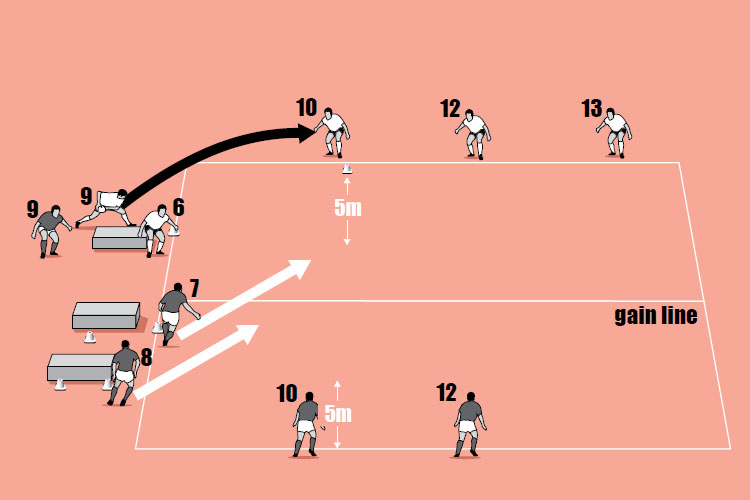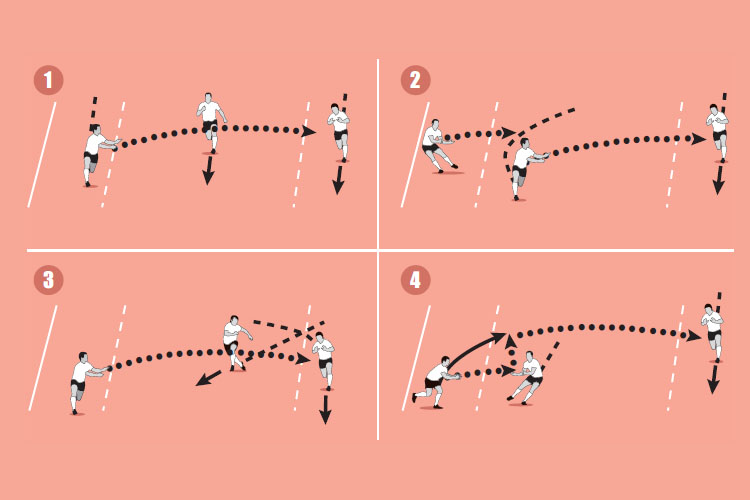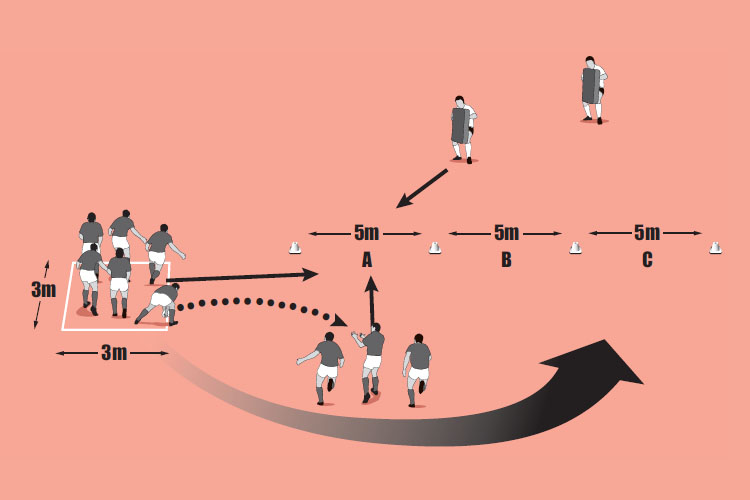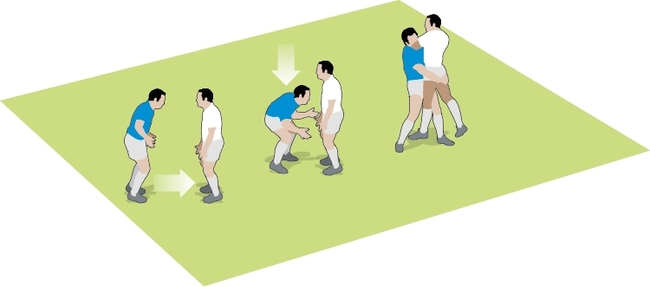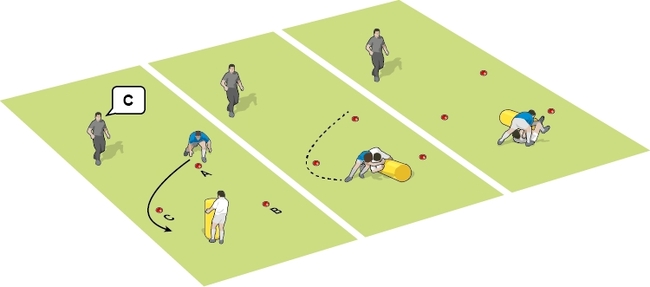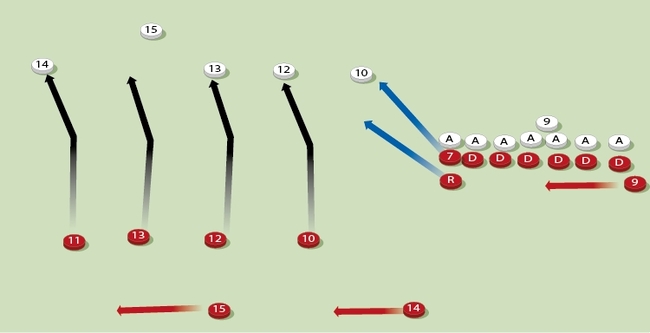Scrum ‘D’
Initially, this session works on the defensive roles of an openside flanker from a scrum. It then develops into an attack and defence session from a backline attack close to the scrum. You could run this with the back row and backline, allowing the front five to work on other skills.
Warm up time: 5
Session time: 5-8
Development time: 6-9
Game time: 15-20
Warm down time: 7
What to think about
With the adoption of the Experimental Law Variations (ELVs) for scrum offside lines, there is more space between the scrum defence and the attacking backline. This means there are new challenges for openside flankers and consequently the defending backline. ELVs at the scrum mean the openside flanker is now closer to the opposition’s 10 than anyone in his own backline. He needs to choose whether to go straight in for the tackle on the 10, or shadow him if he is more likely to pass the ball than run with it. You can also look at the roles of 8 and the backline. If the attack can breach the gain line, it gives them a distinct advantage in the next attack because the defending forwards will be running back from the scrum while the attacking forwards will be running on to the ball.set-up
- In defence, cut down the space from the scrum as a team with players 7, 8, 10 and 12 working together as a unit.
- In attack, fix the defenders from the scrum, and pull the backline defenders out of position.
What you get your players to do
Mark out the depth of a scrum at the side of the area and where the defending team would start from with cones. Also mark out starting positions for players in a normal scrum and a scrum that wheels. Put one player in the defending flanker position and three attackers standing in the 9, 10 and 12 positions. 9 releases the ball to 10, and the defending flanker has to stop the attack scoring at the far end. 10 can only receive a second pass if he runs outside 12. Swap players around and start the flanker from different cones.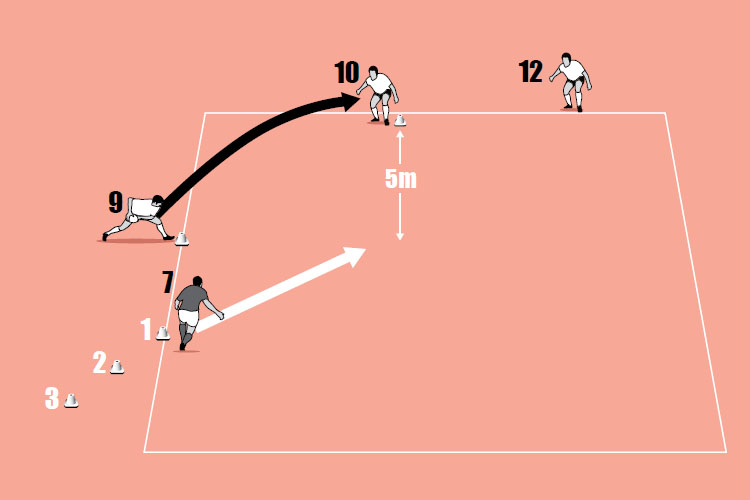
Development
Position extra cones and two ruck pads to represent the back of the scrum (so players have to run around if there is a wheel). Add in a defending 10 and 8. The objective is to stop the attack reaching the gain line (the midline of the scrum).Related Files

Game situation
In a wider area, using the same set up, add another ruck pad at the back of the attacking scrum. Add a player at outside centre and flanker for the attack, and a 9 and 12 to the defence. The objective is to stop the attack reaching the gain line (the midline of the scrum). Play one phase after that.What to call out
- “7: keep inside the ball”
- “Defending 10: take your line from 7”
- “Move up quickly, don’t give up space close to the scrum”
Newsletter Sign Up
Coaches Testimonials

Gerald Kearney, Downtown Las Vegas Soccer Club

Paul Butler, Florida, USA

Rick Shields, Springboro, USA

Tony Green, Pierrefonds Titans, Quebec, Canada
Subscribe Today
Be a more effective, more successful rugby coach
In a recent survey 89% of subscribers said Rugby Coach Weekly makes them more confident, 91% said Rugby Coach Weekly makes them a more effective coach and 93% said Rugby Coach Weekly makes them more inspired.
Get Weekly Inspiration
All the latest techniques and approaches
Rugby Coach Weekly offers proven and easy to use rugby drills, coaching sessions, practice plans, small-sided games, warm-ups, training tips and advice.
We've been at the cutting edge of rugby coaching since we launched in 2005, creating resources for the grassroots youth coach, following best practice from around the world and insights from the professional game.
